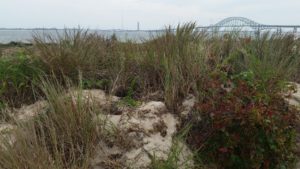State News
New Jersey
Governor Murphy through Executive Order 28, established the goal of setting New Jersey on the path to 100% clean energy by 2050. Building upon that goal, in 2019, Executive Order #92 effectively raised New Jersey’s offshore wind goal from 3,500 megawatts by 2030 to 7,500 megawatts by 2035. On September 21, 2022, Governor Murphy signed Executive Order #307, increasing New Jersey’s offshore wind goal by nearly 50 percent to 11,000 megawatts (MW) by 2040. The Executive Order #307 also directs the New Jersey Board of Public Utilities to study the feasibility of increasing the target further. Governor Murphy’s agenda enhances and expands already existing programs that advance renewable energy, improves energy efficiency, reduces greenhouse gas emissions, prepares the state for the impacts of climate change, and establishes a path forward to ensure New Jersey achieves its greenhouse gas emissions targets while improving resiliency for all communities throughout the State. DEP is now looking ahead to NJ’s 2050 Goal and accelerating its transition to a low carbon economy through reducing carbon pollution, expanding clean energy infrastructure and building resilient communities. Offshore Wind projects will deliver the clean, renewable energy generation needed to meet the State’s goals of 50 percent renewable energy by 2030 and a 100 percent clean energy economy by 2050.
New York
New York Department of State Celebrates the 40th Anniversary of the Coastal Management Program
For 40 years, the New York State Department of State (DOS) has been promoting appropriate development and protection of our coastlines through the New York State Coastal Zone Management Program (CMP). The CMP provides a unique, coordinated framework for federal, state, and local agency decision-making that seeks to protect coastal resources while guiding sustainable development. The CMP and its policies have had positive impacts on New York’s coasts for four decades. Several planning documents have refined the CMP to fit local and regional needs, all nested under the umbrella of the State coastal policies that were crafted to promote the beneficial use of coastal resources and prevention of their impairment, and management of major activities substantially affecting coastal resources.
The 44 State Coastal Policies are statements of enforceable policies to which agencies must adhere and serves as a reference for local government action in the coastal area. The criteria embodied in these policies require all agencies to consider the interrelationships that exist or could exist in the coastal area.
The following topics are included in the 44 State coastal policies:
- Development
- Fish and Wildlife
- Flooding and Erosions Hazards
- Public Access
- Recreation
- Historic and Scenic Resources
- Agricultural Lands
- Energy and Ice Management
- Water and Air Resources
- Wetlands
Why is it important?
New York’s coastal area is extensive and varied spanning 2,600 miles on the ocean and Great Lakes. New York is unique among coastal states. It contains within its coastal boundary a great diversity of marine and freshwater areas divided into four distinct sectors: Long Island, a land mass fronting on the Atlantic Ocean; New York City, a major international port where the intensity of land and water uses is the greatest in the State; the Hudson River Valley, an ecologically and historically important commercial corridor that extends 150 miles from New York City into upstate New York; and the Great Lakes – St. Lawrence River region, a vast freshwater, non-tidal coastal system. Millions of homes and businesses compete for coastal space with important natural areas, beaches, marinas, industry and other development. The CMP sets guidelines through programs, policies and technical assistance to coastal communities.
Once the CMP was approved in 1982, it started shaping where and how appropriate development in the coastal area should occur. Not only does it provide funding streams to enhance coastal management, the CMP also encourages closer federal and state coordination. Through the Local Waterfront Revitalization Program (LWRP), municipalities are also given a tool to ensure their coastal priorities and values are reflected in state and federal decisions. Nearly 100 communities or regions have approved LWRPs that guide new waterfront development, preserve and enhance public access, conserve natural areas, and reduce impacts due to flooding and erosion. The CMP has been able to evolve and innovate over time, with increased focus on renewable energy and resilient coastal designs, all within the underlying construct of intergovernmental collaboration and partnership.

Robert Moses Causeway Credit: NY DOS
Share this:
